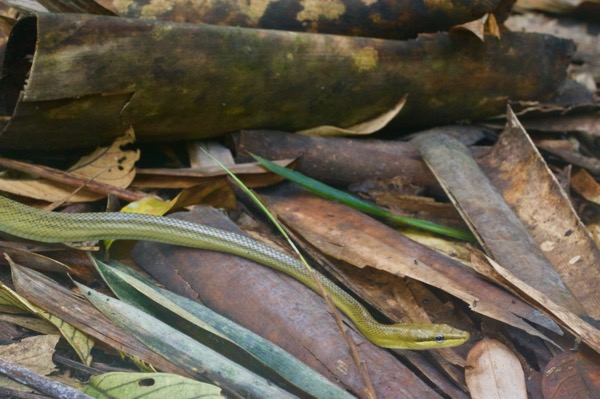
The habitats in this area are a mixture of riparian, thick forest, and some more open forest.
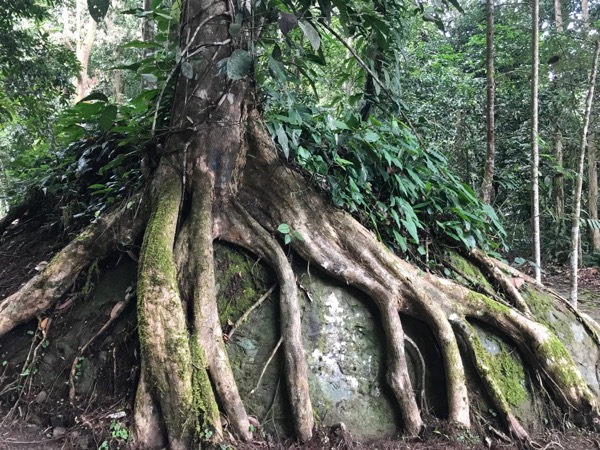
The world's largest flowers bloom unpredictably here as in other parts of Borneo. When they bloom on private land, the landowners will often put up signs advertising a sight of one of these floral Godzillas, for a fee of course. One day we hiked an hour from camp so I could look at this big weird flower for a few minutes.
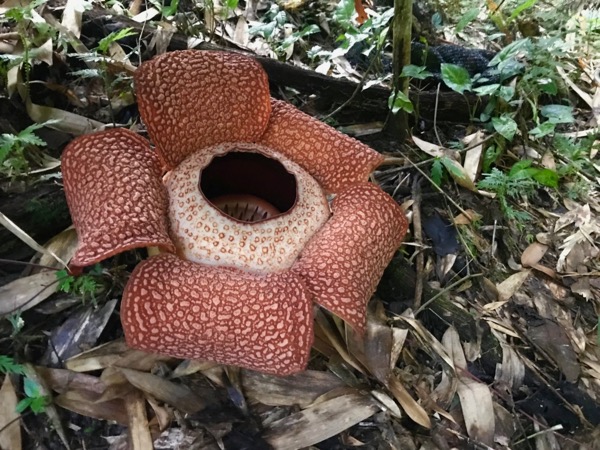
The mosquitos aren't too bad in Borneo, compared to other tropical areas I've been. But your blood will still be sucked, and frequently, by the likes of this:

Here are a few of my favorite invertebrates from this area.

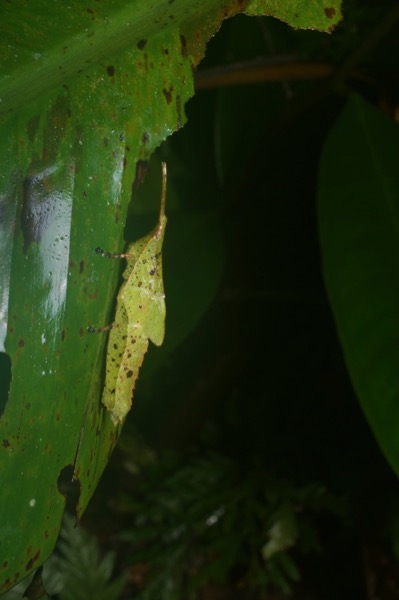
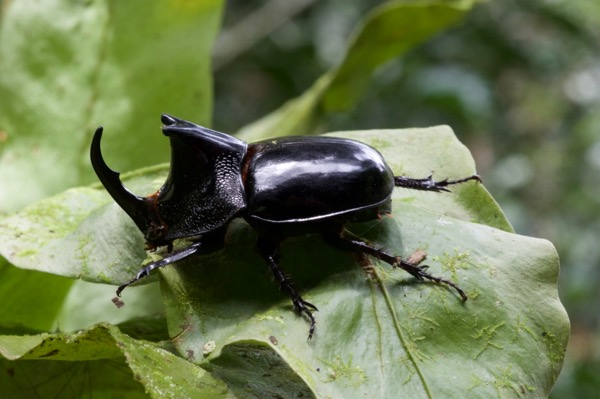
And now, the usual parade of unidentified phasmids that you've all been waiting for.



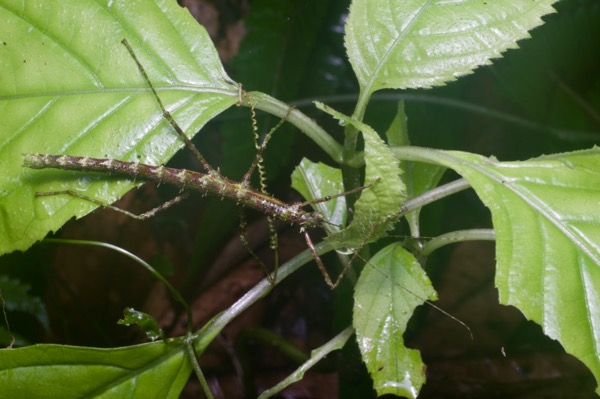
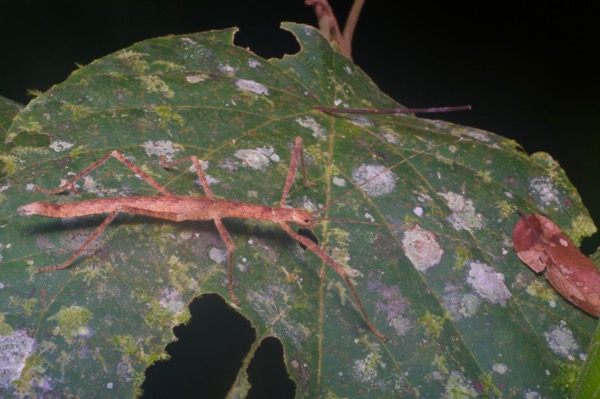

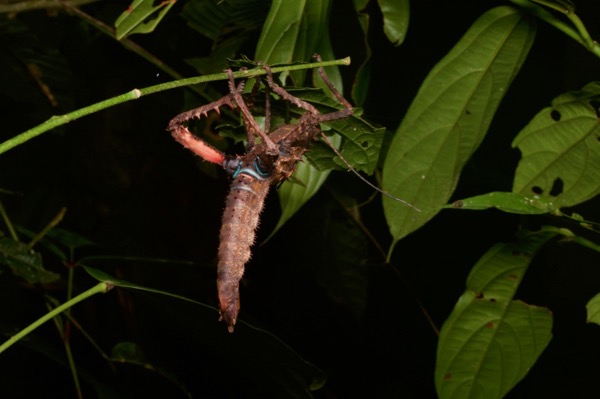
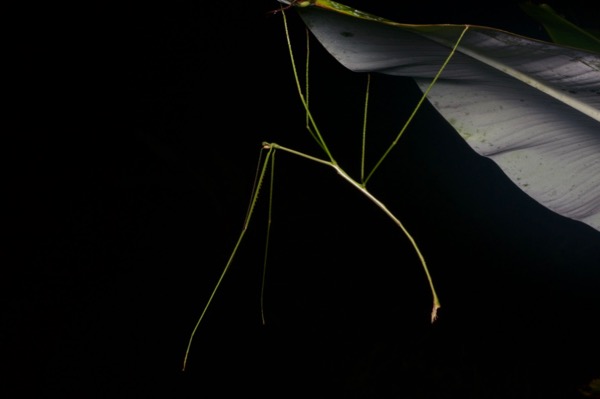
When I found my first Malayan Horned Frog last year, I felt lucky and special. When I found my first one this year, I felt the same. When I found my second one this year, I thought I must be a really good herper. Then Kurt found several of them from long distance at Mulu. Still, I thought, those frogs are so rare and special!
But after a couple of nights in the lowlands of Sabah, I started to realize that while each one is still a special snowflake, fully deserving of our undying love and respect, they are far from rare.

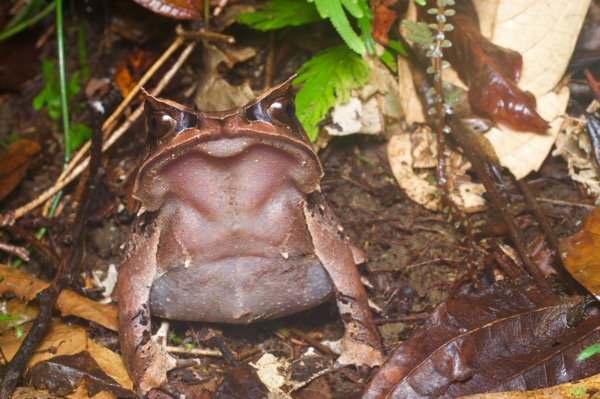
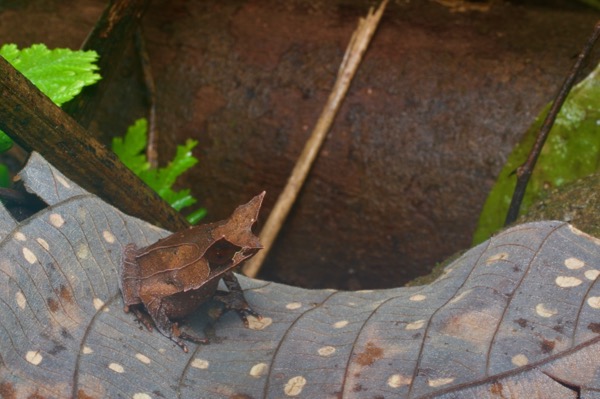
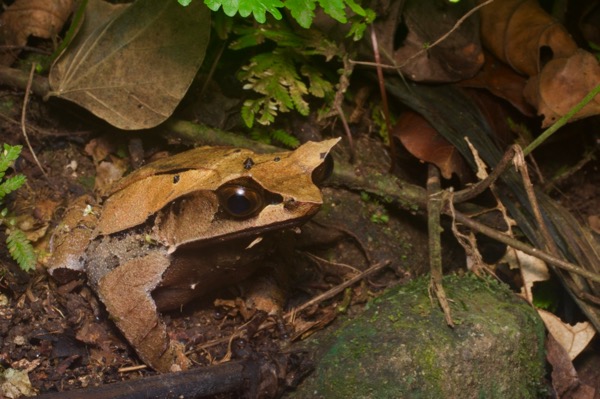




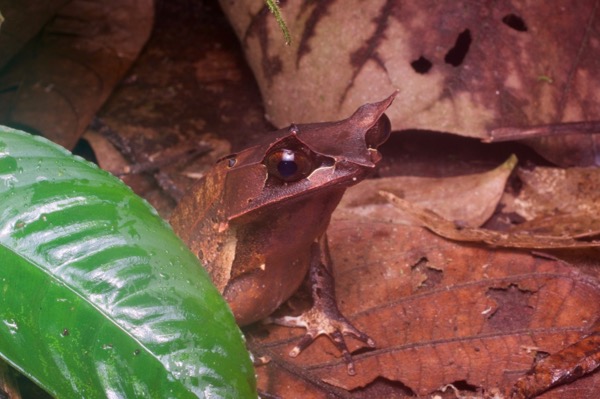
I mentioned earlier that the frogs in the Limnonectes "kuhlii" complex near Kuching had been split out into several distinguishable species. As far as I know, that is not yet the case for the ones here.

Grass Frogs lurked in large numbers near the ephemeral ponds in dirt roads.
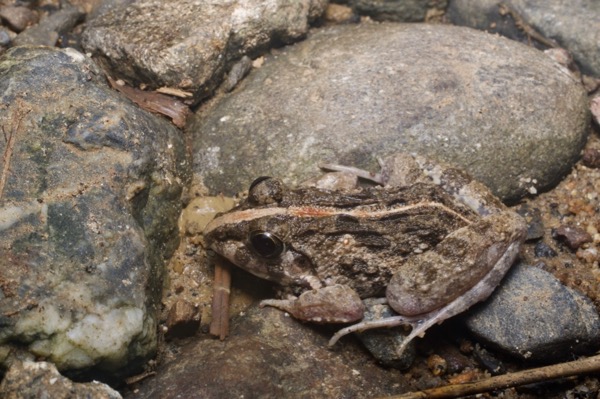
Deeper in the forest, the role of basically terrestrial medium-sized jumpy frog was primarily played by the Northern Torrent Frog. This group of frogs is named after the behavior of laying their eggs in fast-moving streams. The adult frogs are often found near these streams, but they also venture throughout the forest.

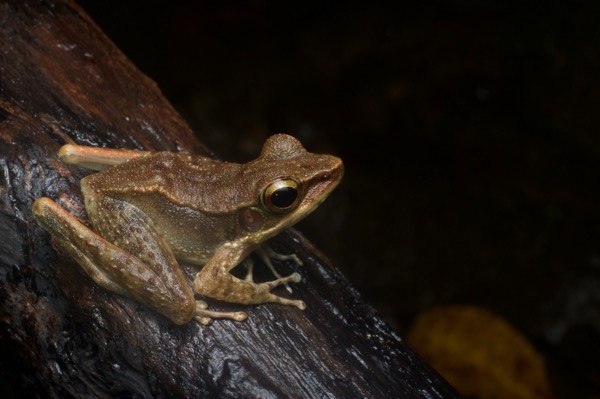

Among my many photos of Meristogenys orphnocnemis, I discovered one frog that looked quite similar but just different enough that I asked Borneo frog expert Dr. Alexander Haas about it. He pondered it for a while and eventually concluded that it is a much less commonly seen species, Meristogenys maryatiae. When that kind of thing happens, I'm glad that I tried to take photos of nearly every individual herp that I came across, though I'm sure Kurt thought I was crazy. Not an unreasonable thought, really.

A few years ago this spindly forest-floor denizen would have been classified as Leptolalax dringi, but more recently that species has been restricted to its type location in Mulu (where sadly Kurt and I did not see any). Now it's Leptolalax fritinniens, and some would argue for Leptobrachella fritinniens. It's not easy to keep up with frog taxonomy.
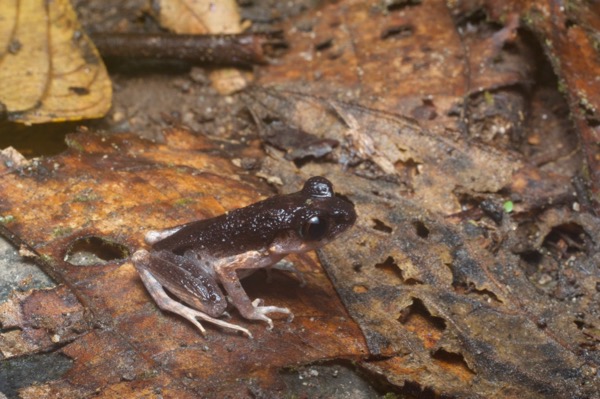
Sticky Frogs are so named due to the glue-like substance they will get on you if you pick them up. Then they will laugh and laugh, and you will deserve it. This genus is undergoing a lot of revision, but as far as I can tell this individual is a match for the widespread Bornean Sticky Frog, at least until that species is split up.
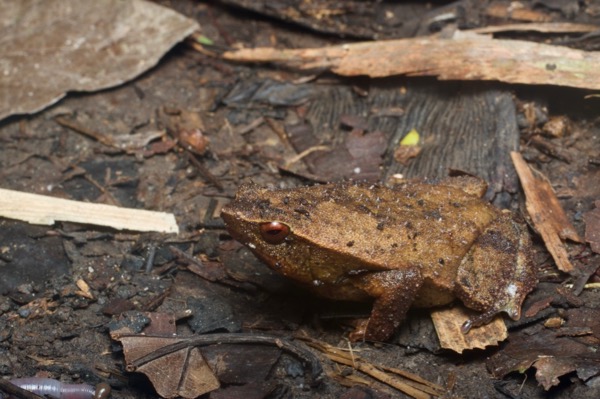
The Seep Frog is quite a specialist, found almost always "where water seeps from a slope into a small flattish area" (per the new and excellent A Field Guide to the Frogs of Borneo, Third Edition).
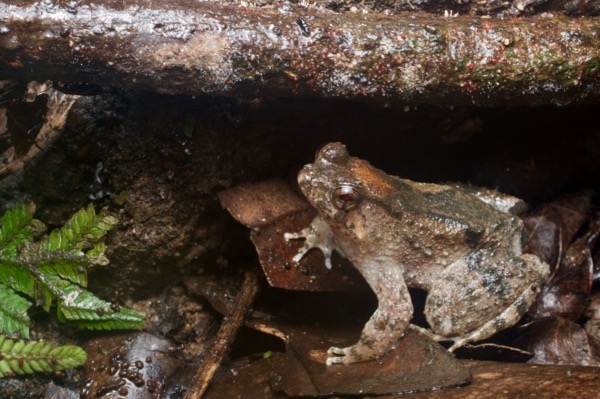
I couldn't quite decide which teeny-tiny spindly toad species this was, so I enlisted the aid once again of Dr. Alexander Haas, who told me "The best I can give you at the moment is Ansonia platysoma, pending further studies".
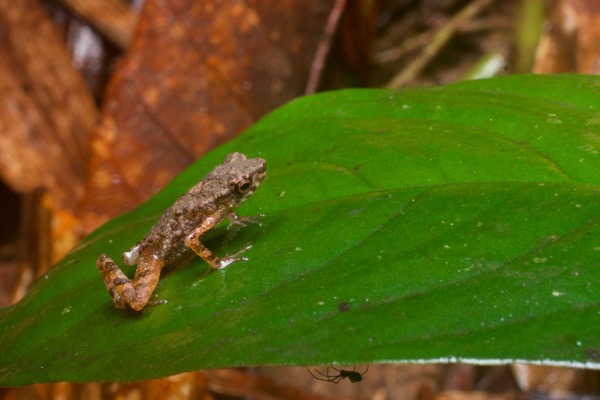
This Spotted Stream Frog is a close cousin of the Striped Stream Frog we saw at Mulu. They were considered to be the same species until fairly recently.
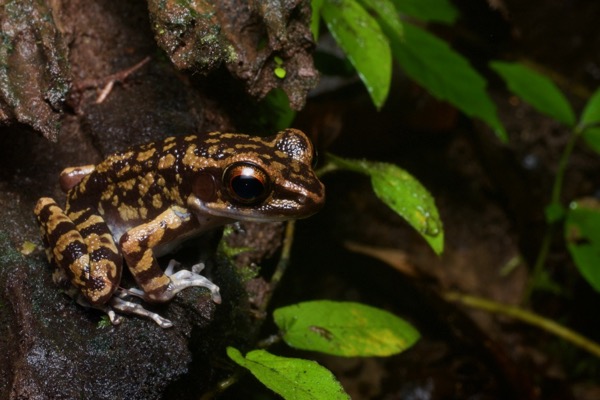
You might remember that around Kuching I photographed the talented and lovely Black-spotted Rock Skipper, which, if you recall correctly, looks like this. (This one is from the Sabah location.)

I also promised some relatives. Here we saw two others. The White-spotted Rock Skipper is quite similar, but somewhat smaller and lumpier.
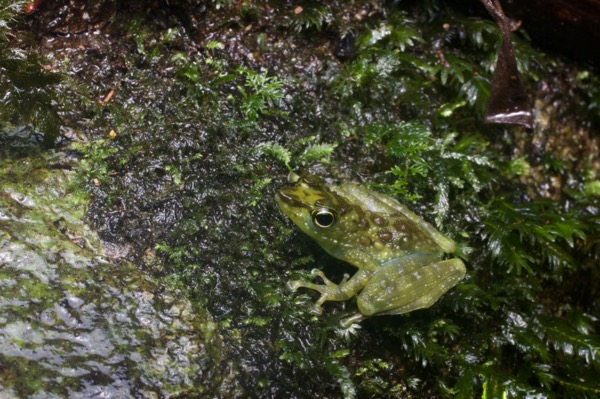
The plain old Rock Skipper (must have been named first) is darker in color, has a blunter snout, and is significantly more aquatic. These last two features are apparently related, as it is known to eat aquatic insect larvae, probably by biting them off of underwater rock surfaces. The blunt snout would help with this.

These frogs are a perfect color and pattern match for the boulders that they cling to, often vertically.
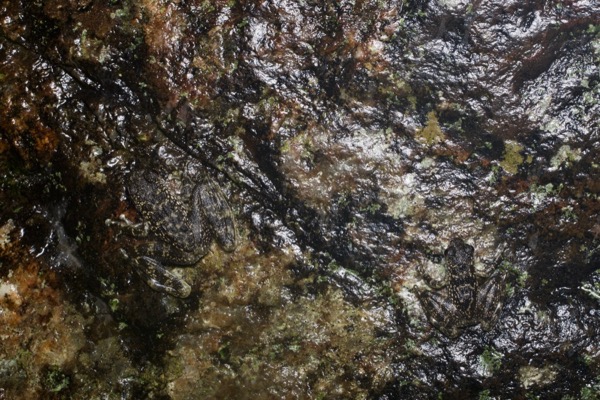
If you believe the Frogs of Borneo book, the Charming Treefrog is a relatively rare species, known from only a few widely separated locations. If you believe the Frogs of Borneo website, the Charming Treefrog is quite common in lowland habitats. All I know for sure is that I only saw one, and it was indeed charming.

Sure, "Charming Treefrog" is a pretty good name. But this handsome frog definitely wins the name game.

The File-eared Treefrog is a spectacular frog. But this one has chosen to share its perch with the king of Malaysian frogs, and has been diminished in comparison. Note the casual comfort and look of disdain in the eyes of the superior frog.

We found a couple of species of small water-loving skinks at night. This Brook's Keeled Skink was resting, as a diurnal skink should be.
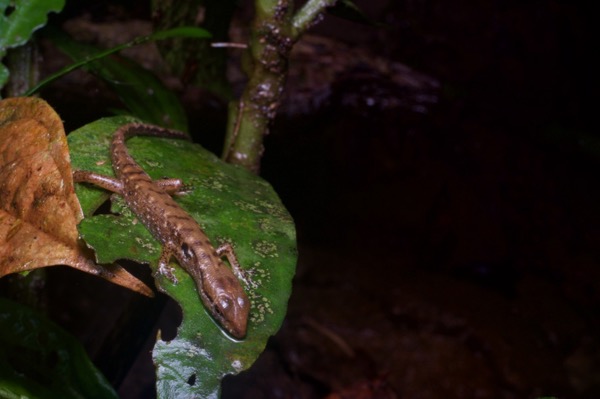
In contrast, this Beccari's Keeled Skink was foraging in the leaf litter when it should have been resting. We punished it for this aberrant behavior by detaining it a few minutes for photos.

We saw a few sleeping agamids at night, but no new ones. To represent this set, here's an adult female Great Angle-headed Lizard.
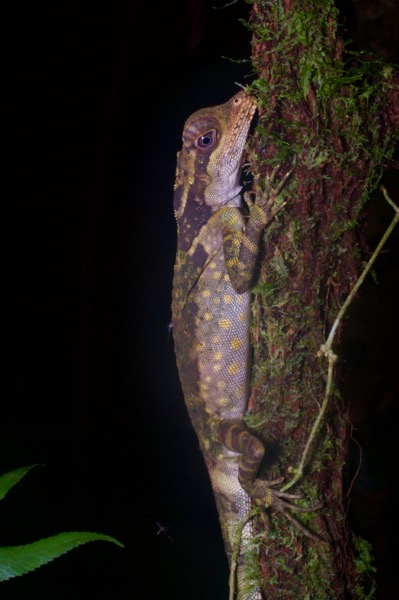
In the more open areas, we spotted a few flying lizards clambering up the tree trunks. I was hoping to see one fly, but they all remained tree-bound.
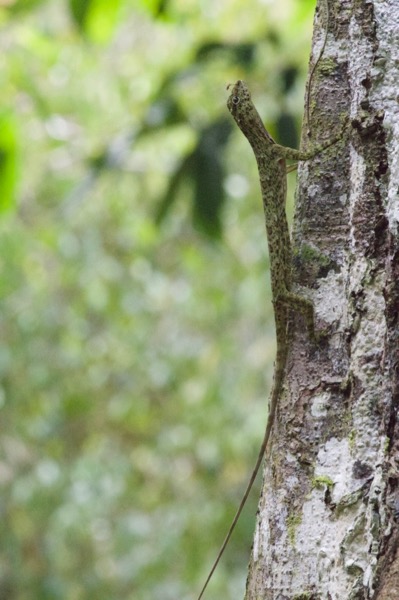
We only saw a few Cyrtodactylus geckos in this area, but we were sufficiently far away from the locations we had previously visited that they belonged to a new-to-me species. This is Cyrtodactylus ingeri, not to be confused with the very similar Inger's Bent-toed Gecko (Cyrtodactylus pubisulcus) that we saw in Sarawak.

I also saw my third Cat Gecko in this area. This one was a very pretty youngster.

This Mock Viper didn't look particularly vipery to me, but I have since learned that it looks a lot like the widespread Asian viper Calloselasma rhodostoma, so what do I know.

Kurt walked right past this beautiful little snake, which was on a bush a few feet off the ground. That more than makes up for the ten or twenty times that he has found snakes that I walked right past.

We captured the Jeweled Kukri Snake to take it back to camp and get photos under better conditions, because it was starting to rain when we found it. After the rain subsided and the photos were taken and the camp workers were shown the pretty little snake, we headed out again and brought it back to the bush upon which it had been found. A few moments after releasing the snake, Kurt spotted another much larger snake. I think that was good karma for releasing the kukri snake in its exact original location.
At first we assumed this new snake was the common Ahaetulla prasina, but a closer look at its head convinced us that it was instead Ahaetulla fasciolata, a lifer for both of us.

I was twenty or thirty feet ahead of Kurt when I found the little green Charming Treefrog pictured earlier and didn't recognize it. I called him forward to check it out. After we finished admiring it and capturing its soul forever, Kurt returned to his position twenty or thirty feet behind me to make sure he didn't miss anything. And it's a good thing he did, because I had walked past this big dramatic viper without noticing it.
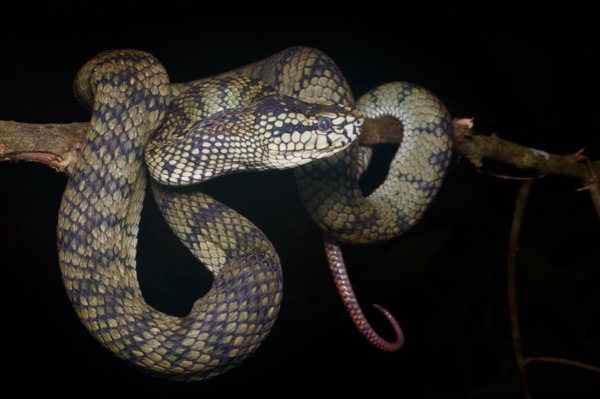
As we hiked out of the forest camp on our final morning in this spot, this time Kurt was walking in front and this time I spotted a snake that he had walked right past. His theory was that his combination of backpack and camera-containing frontpack meant that he couldn't really look down easily. My theory was that it was just my turn again.
This is normally a high-speed species, but this one must have been just starting to warm up in the morning, because it held its position in the middle of the trail long enough for both of us to get photos even after we both had to assemble our cameras and wait for the lenses to defog.
